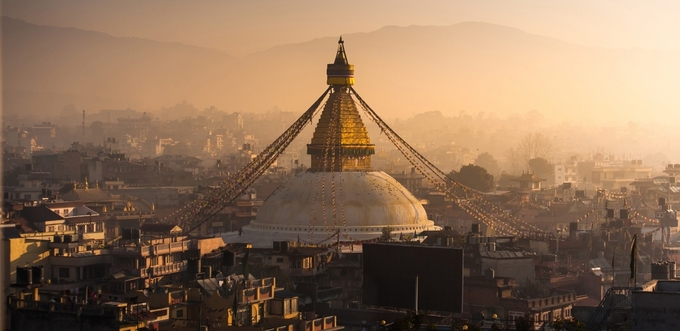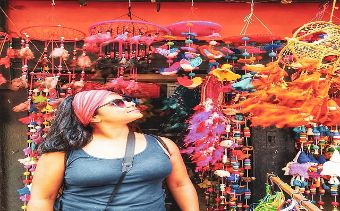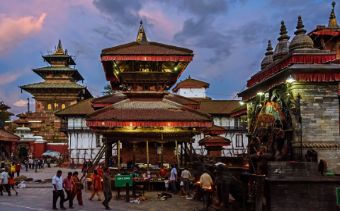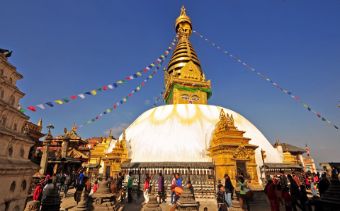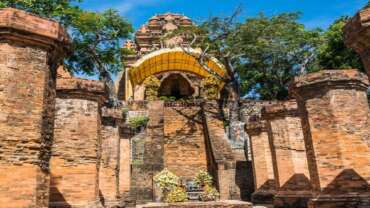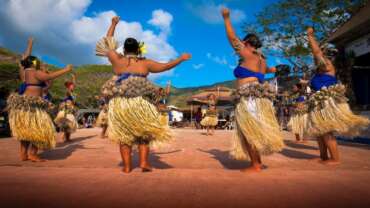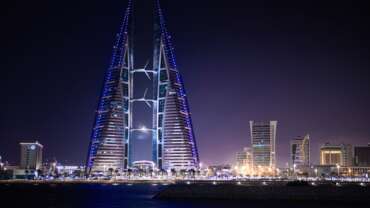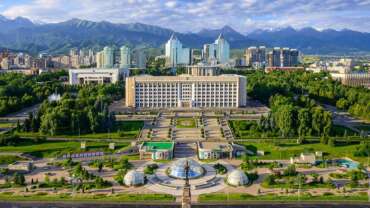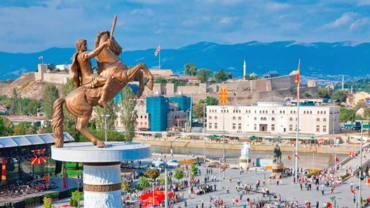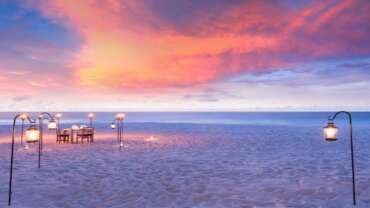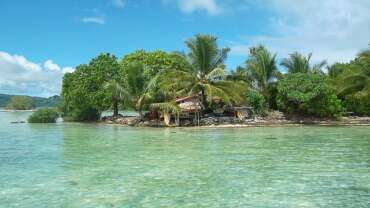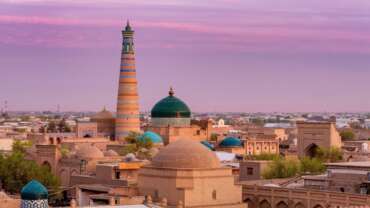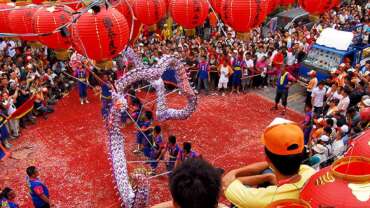MICE in Nepal
A perfect blend of business and travel. Mice Tourism Nepal is one of the emerging travel trend and future of Nepal Tourism. A country situated between two big Tycoons: China & India can take more advantage from the big countries. MICE tourism Nepal offers distinctive opportunities for enhancing business with partners, potential investors, customers, suppliers along with the exchange of innovative idea in today’s rapidly growing technological market. The Meetings, Incentives, Conferences, and Exhibitions (MICE) industry is prominently associated with the travel and hospitality industry.
MICE tourism in Nepal has been growing extensively and becoming a popular destination in the world. Nepal offers excellent infrastructure, comprehensive high-tech facilities, and trained manpower to hold a successful event. The top hotels and resorts offer conference halls and excellent meeting facilities at par with international standards. Being a Business traveler, you have different needs and we cater those needs as per your requirement. We offer you complete package for your Meetings, Incentives, Conferences and Exhibitions. We arrange the board rooms, conference halls, transportation, documentation, and any other special company needs (including posters, flyers, and audio visual equipment) all based on the specific requests of your company.
Nepal stands popular as an international meeting destination in the world’s business community. Conference halls and top hotels provide excellent meeting facilities at par with international standards, while professional groups that include hotels and tour operators have eased the process of organizing and managing these events.
Why Nepal for MICE Tourism?
It offers a good range of hotels, convention centers and conference facilities with modern amenities. Kathmandu and Pokhara offer a wide choice of conference centers from small to world class facilities. Besides the conference facilities at the five star hotels, there are alternatives.
It is a peaceful and a safe destination. The Nepalese people, as diverse as they are, live in harmony – perhaps fatalistic, perhaps content, but they take on the hardship of life with a smile. Hinduism and Buddhism have co-existed so harmoniously in Nepal for centuries.
It is a destination that will fire up the imagination of the delegates. They can have unique pre or post tour programs especially designed to suit the budget and their liking and interests.
It offers one of the finest cuisines, sightseeing/excursions programs, adventure activities, enthralling mountain flights, entertainment, shopping and more.
Nepal is a dream comes true for an organization that is looking for a new and exciting destination to offer as a special location for MICE.
Meetings
All types of professional meetings arrangements, incentive tours for corporate organization and employees, and special types of meeting and conference arrangements for business or special interest groups are growing to make the tour goal efficient. The abundant potential and worldwide popularity of MICE tourism is now a trend in new business age. Certainly, Every corporate demand is somewhere associated with travel procedure. So, we came to facilitate the national and international corporate travel demands.
Incentives
The socio-economic status is also a major concern for corporate organization. We try to facilitate the activities, accompanying the finest event management practices. Nepal is not only a potential corporate destination; it also caters the leisure, adventure and many other activities. Nepal is a country of peace and harmony. The sightseeing around the places, getting to know about the culture and traditions, the lifestyle of Nepalese people is also a very interesting part in Nepal. We may arrange the tours as per the interest and choice of every individual in Nepal. The back-forth programs can be added as per the request of company and individuals.
Conventions/Conferences
The diverse terrains of Nepal have distinct type of beauty and provide lifetime experiences. The capital of Nepal, Kathmandu is also popular for the meetings and conventions/conferences. Pokhara is equally important place for MICE tours. The corporate events and leisure activities, Nepal caters the every need of people. The enormous corporate world and necessity of business and networking is now a mandatory demand. Also, Various types of tours including trekking and other adventurous activities are also popular in Nepal. The conferences and conventions in Nepal are growing, providing the good venues and catering all the needs.
Events / Exhibitions
The growing prospects and establishment of good hotels/ exhibition centers caters the need and demand of a company. The events and exhibitions are productive, if the destination provides good accommodation and services. Events/ Exhibitions in Nepal are growing because of its diverse nature and cultural values. With an immense interest of corporate in destination events and exhibitions, MICE tour in Nepal is productive. It provides a good opportunity to learn about the destination and artifacts of the place. It becomes a productive measure, if done right in a right place.
History of Nepal
Nepal’s history dates back to the time of the Gopalas and Mahishapalas who are believed to have been the earliest rulers of the valley with their capital at Matatirtha, the south-west corner of Kathmandu Valley. They were ousted by the Kirantis around the 7th or 8th Century B.C. The Kirantis are said to have ruled the valley for many centuries following their victory. Their famous King Yalumber is even mentioned in the ‘Mahabharata’ as he is said to have led his troops to the epic battle. Then around 300 A.D. the Lichhavis arrived from northern India and overthrew the Kirantis.
One of the legacies of the Lichhavis is the Changu Narayan Temple near Bhaktapur, a UNESCO World Heritage Site (Culture), which dates back to the 4th Century. In the early 7th Century, their King Amshuvarma, married off his daughter Bhrikuti to the famous Tibetan King Tsong Tsen Gampo, thus establishing good relations with Tibet. The Lichhavis brought art and architecture to the valley but the golden age of creativity arrived in 1200 A.D after the Mallas conquered them.
During their 550 year rule, the Mallas built remarkable temples and artistically designed palaces with picturesque squares filled with woodcarvings and metal works. It was also during their rule that the valley society and the cities became well organized; spectacular religious festivals were introduced and literature, music, art and drama were encouraged. After the death of King Yaksha Malla, the valley was divided into three kingdoms: Kathmandu (Kantipur), Bhaktapur (Bhadgaon) and Patan (Lalitpur). At the time, Nepal as we know it today was divided into 46 independent principalities. One among these was the kingdom of Gorkha ruled by a Shah king. Much of Kathmandu Valley’s history around this time was recorded by Capuchin friars from Italy who lived in the valley on their way in and out of Tibet.
An ambitious Gorkha King named Prithvi Narayan Shah embarked on a conquering mission that led to the defeat of all the kingdoms in the valley including Kirtipur.by 1769. Instead of annexing the newly acquired states to his kingdom of Gorkha, Prithvi Narayan decided to move his capital to Kathmandu, thus establishing the Shah dynasty which ruled unified Nepal from the late 18th century to 2008.
The Gorkha state dates back to 1559 when Dravya Shah established his kingdom in a land predominated by Gurung and Magar people. During the 17th and early 18th centuries, the Gorkha kingdom was slowly expanding, conquering some neighbouring states while forging alliances with others. Eventually it was Prithvi Narayan Shah who led his troops to the Kathmandu Valley. After a long struggle, he defeated all the valley kings and established his palace in Kathmandu leaving Gorkha for good. Recognizing the threat of the British Raj in India, he banished European missionaries from the country and for more than a century, Nepal remained closed to the outside world.
During the mid-19th Century Jung Bahadur Rana rose to power as Nepal’s first Prime Minister, becoming more powerful than the Shah King he was supposed to serve under. The king became a mere figurehead and Jung Bahadur started a hereditary reign of the Rana Prime Ministers that lasted for 104 years.
In 1950, the Ranas were overthrown in an uprising to bring democracy in the country with strong support from the-then monarch of Nepal, King Tribhuvan. Soon after the overthrow of the Ranas, King Tribhuvan was reinstated as the Head of the State. In early 1959, Tribhuvan’s son King Mahendra issued a new constitution, and the first democratic elections for a national assembly were held. The Nepali Congress Party was victorious and their leader, Bishweshwar Prasad Koirala (popularly known as B.P.) formed a government and served as Prime Minister. But this government didn’t last long as King Mahendra decided to dissolve Parliament in 1960, and introduced a one party ‘Panchayat’ rule.
The Panchayat system lasted until 1990, when a popular people’s movement led by the political parties that had been banned by the government which until then had been known as ‘His Majesty’s Government’, gave way to democracy. The long struggle paid off when King Birendra accepted constitutional reforms and established a multiparty parliament with himself as the Head of State and an executive Prime Minister under him. In May 1991, Nepal held its first parliamentary elections.
In February 1996, the Maoist parties declared a People’s War against monarchy and the elected government. Then on 1st June 2001, a horrific tragedy wiped out the entire royal family of Nepal including King Birendra and Queen Aishwarya along with most of their closest relatives. With only King Birendra’s brother, Gyanendra and his family surviving, he was crowned king. King Gyanendra abided by the elected government’s rule for a short time, but then dismissed the elected Parliament to wield absolute power. In April 2006, another People’s Movement was launched jointly by the democratic parties focusing on Kathmandu, which led to a 19-day curfew imposed by the king. With the movement not cowering down and ignoring even the curfew, King Gyanendra eventually relinquished his power and reinstated Parliament.
On 21st November 2006, Prime Minister Girija Prasad Koirala and Maoist Chairman Prachanda signed the Comprehensive Peace Agreement (CPA) 2006, committing to democracy and peace for the progress of the country and people. The king was removed and the decade long Maoist war on the state came to an end. A Constituent Assembly election was held on 10th April 2008. And on 28th May 2008, the newly elected Constituent Assembly declared Nepal a Federal Democratic Republic, abolishing the 240 year-old monarchy. Nepal today has a President as Head of State and a constitutionally elected Prime Minister heading the Government.
People of Nepal
There are about 101 ethnic groups speaking over 92 languages. The distinction in caste and ethnicity is understood better with a view of customary layout of the population. The official language of Nepal is Nepali which is spoken and understood by a majority of the population. The ethnic groups have their own mother tongues. English is taught in schools and many of them are English medium schools so a large portion of the population understands the language. Most private schools today teach in EngIish.
Northern Himalayan People
The mountainous regions of Nepal are inhabited by Sherpas, Dolpa-pas, Lopas, Baragaonlis, Manangays. The Sherpas are mainly found in the east, Solu and Khumbu region; the Baragaonlis and Lopas live in the semi-desert areas of Upper and Lower Mustang in the rain-shadow area; the Manangays live in Manang district while the Dolpa-pas live in Dolpa district of west Nepal.
Middle Hills and Valley People
Several ethnic groups live in the middle hills and valleys. Among them are the Magars, Gurungs, Tamangs, Rais, Limbus, Thamis, Sunuwars, Newars, Thakalis, Chepangs, Brahmins, Chhetris and Thakuris, Damai, Sarki, Kami and Sunar.
Ethnic Diversity in the Kathmandu Valley
Kathmandu Valley represents a cultural melting pot of the country, where people from varied backgrounds have come together to form a diverse population. The natives of the Kathmandu Valley are the Newars. Although Newars are either Hindus or Buddhists, their culture is vastly different from the rest of the Nepali people. Their rituals, food and festivals are unique to them. Newars of Kathmandu Valley were predominantly traders or farmers by occupation.
Tarai People
The main ethnic groups in the Tarai are Tharus, Darai, Kumhal, Rajbangsi, Bote, Majhi and other groups. They speak north Indian dialects like Maithili and Bhojpuri. Owing to the fertile plains of the tarai, most inhabitants subsist on agriculture. There are, however, some occupational castes like Majhi (fisherman), Kumhal (potter) and Danuwar (cart driver).
Languages
The principal and official language of Nepal is Nepālī (Gorkhali), spoken in the Tarai and the mid-mountain region. Nepālī, a derivative of Sanskrit, belongs to the Indo-Aryan branch of the Indo-European family. There are a number of regional dialects found in the Tarai and mountain areas. The languages of the north and east belong predominantly to the Tibeto-Burman family. These include Magar, Gurung, Rai, Limbu, Sunwar, Tamang, Newari, and a number of Bhutia dialects, including Sherpa and Thakali. Although Newari is commonly placed in the Tibeto-Burman family, it was influenced by both Tibeto-Burman and Indo-European languages.
Religion
In Nepal a vast majority of the population is Hindu, but a small percentage follows Buddhism or other religious faiths. Hindus and Buddhists tend to be concentrated in areas where Indian and Tibetan cultural influences, respectively, have been dominant.
Art & Culture of Nepal
Customs and traditions differ from one part of Nepal to another. The capital city Kathmandu enjoys a rich tapestry of cultures blending to form a national identity. Kathmandu Valley has served as the country’s cultural metropolis since the unification of Nepal in the 18th Century. A prominent factor in a Nepali’s everyday life is religion. Adding color to the lives of Nepalis are festivals the year round which they celebrate with much pomp and ceremony. Food plays an important role in the celebration of these festivals.
Religion
Nepal was declared a secular country by the Parliament on 18th May 2006. Religions practiced in Nepal are: Hinduism, Buddhism, Islam, Christianity, Jainism, Sikhism, Bon, ancestor worship and animism. The majority of Nepalis are either Hindus or Buddhists and these two religions have co-existed in harmony through centuries.
Buddha is widely worshipped by both Buddhists and Hindus of Nepal. The five Dhyani Buddhas; Vairochana, Akshobhaya, Rathasambhava, Amitabha and Amoghasiddhi represent the five basic elements: earth, fire, water, air and ether. Buddhist philosophy conceives these deities to be the manifestations of Sunya or absolute void. Mahakaala and Bajrayogini are Buddhist deities of the Vajrayan sect worshipped by Hindus as well.
Nepali Hindus worship the ancient Vedic gods. Bramha the Creator, Vishnu the Preserver and Shiva the Destroyer as the Supreme Hindu Trinity. People pray to the Shiva Linga or the phallic symbol of Lord Shiva in most Shiva temples. Shakti, the dynamic element in the female counterpart of Shiva, is highly revered and feared and some of the names given to her are: Mahadevi, Mahakali, Bhagabati and Ishwari. Kumari, the Virgin Goddess, also represents Shakti. Other popular deities are Ganesh for luck, Saraswati for knowledge, Lakshmi for wealth and Hanuman for protection. Krishna, believed to be the human incarnation of Lord Vishnu is also worshipped widely. Hindu holy scriptures: Bhagawat Gita, Ramayan and Mahabharat are widely read in Nepal. Vedas, Upanishads and other holy scriptures are read by learned Brahmin Pundits during special occasions.
Customs
The diversity in Nepal in terms of ethnicity again makes room for various sets of customs. Most of these customs go back to the Hindu, Buddhist or other religious traditions. Among them, the rules of marriage are particularly interesting. Traditional marriages call for deals arranged by parents after the boy or girl come of age.
The slaughter of cows is illegal in Nepal. The cow is considered a Universal Mother, symbolizing motherhood, charity, and pity. To respect it is to put into practice the concept of Ahimsa, which in Sanskrit literally means “non-violence”, an important component of Hinduism, Buddhism and Jainism. Before entering a temple or a house, you will often be asked to take off your shoes, so as not to pollute the pure interiors with your stained soles. Some temples are forbidden to non-Hindus. The right hand, considered pure, is used to eat, pay, give and receive. If rural Nepal is mostly agrarian, some aspects of the urban life carry the glitz and glamour of the ultra-modern world..
Food
Food habits differ from region to region and much of Nepali food has been influenced by Indian and Tibetan styles of cooking. However the Newar people have their unique cuisine which is vast and nutritious. The Thakalis also have a distinct cuisine although the staples are the same daal and bhat which most Nepali people eat. The regular Nepali meal is daal (lentil soup), bhat (boiled rice) and tarkari (curried vegetables), often accompanied by achar (pickle). Curried meat is very popular, but for many it is saved for special occasions. Momos (steamed or fried dumplings) deserve a mention as one of the most popular snacks among Nepalis. Rotis (flat bread) and dhedo (boiled flour) are also the staple diet in some homes.



